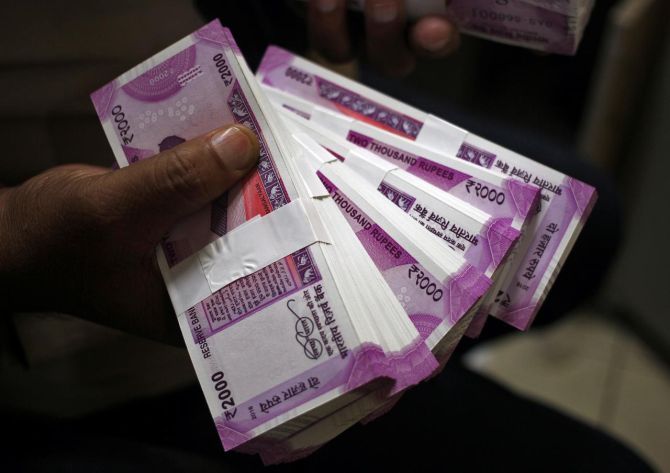At the end of March 2016, Uttar Pradesh was the most indebted state, with an outstanding liability of Rs 385,300 crore, followed by Maharashtra at Rs 351,400 crore and West Bengal at Rs 314,700 crore.

Some of the debt-ridden states are likely to face redemption pressure on account of maturity of market loans starting this financial year.
Recently, the Reserve Bank of India (RBI), in its publication, State Finances: A Study of Budgets, pointed out that redemption pressure on state loans will start rising from 2018-19 and reach a peak in 2026-27.
According to the RBI data, at the end of March 2018, 67.2 per cent of the outstanding state development loans (SDLs) were in the residual maturity bucket of five years and above.
About 16.7 per cent of the outstanding SDLs will mature in the next three years, keeping redemption pressure high in the near future.
In one to three years, some of the states, which would see more than 10 per cent of their outstanding state securities maturing, include West Bengal (11.7 per cent), Uttar Pradesh (13.2 per cent), Rajasthan (15.8 per cent), Punjab (17 per cent), Maharashtra (11.08 per cent), and Gujarat (14.4 per cent).
At the end of March 2016, Uttar Pradesh was the most indebted state, with an outstanding liability of Rs 385,300 crore, followed by Maharashtra at Rs 351,400 crore and West Bengal at Rs 314,700 crore.
Starting 2007, states have been borrowing heavily through market loans.
The borrowings were mostly through SDLs, which were of 10-year maturity, and mostly subscribed by public sector banks and other government undertakings.
Also, the government has been increasingly encouraging states to opt for market loans, beginning 2007, entailing a higher cost for states for a weaker profile.
It may be recalled that in 2003, the central government had announced a debt-swap scheme, which allowed state governments to replace high cost borrowing with lost cost ones from a small savings pool and market borrowings.
That time, some states, including West Bengal, did not participate in the scheme, further accentuating the debt repayment burden.
Also, in recent years, there has been a further rise in the issuance of SDL. The number of issuances of SDL almost doubled between 2012-13 and 2017-18 even as the average issue size saw a rise.
Photograph: Mukesh Gupta/Reuters










